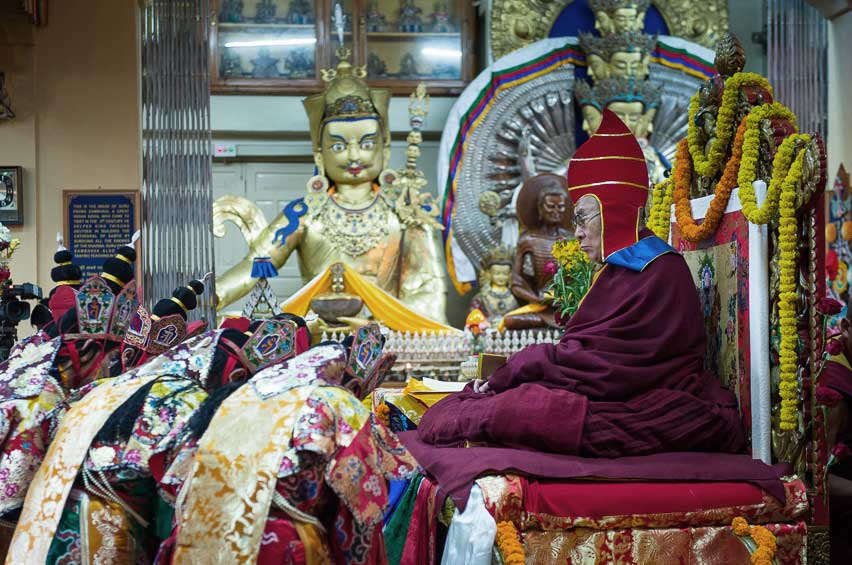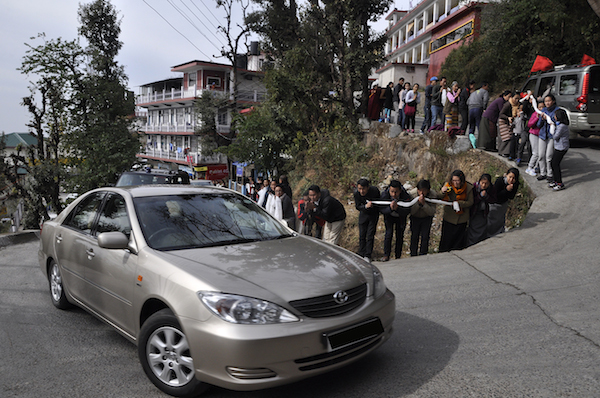Denpasar, Indonesia – Over Christmas and New Year, more than half a million tourists will fly to the Indonesian resort island of Bali. Many will forgo the well-worn beach districts of Kuta and Seminyak and head half an hour further north to the bohemian surfing hub of Canggu.
With an eclectic mix of restaurants, graffiti projects, coworking spaces, yoga studios, boutique hotels and Hindu temples among dreamy green rice fields, Canggu is an Instagram hotspot.
It is also the residence of choice for many of the 30,000 expats living in Bali, who have leased or built luxury villas in the area.
The flurry of activity has sent property prices soaring on an island that already boasts some of the best performing real-estate in the world, according to Matthew Georgeson, an Australian property agent who has worked in Bali for 15 years.
A spokesperson for the Temple of Enthusiasm – a retail and entertainment barn credited, and concurrently blamed, for the gentrification of Canggu – says prices have increased 40-fold since they signed their land lease a decade ago.
“As a destination for tourism, Canggu is just getting started,” Georgeson said. “All the young people want to be there.”
Canggu is the new hotspot for tourists visiting Bali [Ian Neubauer/Al Jazeera]
But the progress has come at a price: Canggu’s rice fields, the feature that once made it so attractive, are being erased. The beachfront is now almost entirely lined with bars – from palm-thatched lean-tos to palatial white beach clubs, while new multi-storey hotels continue to muscle their way above the coconut palms.
‘Crazy development’
On December 26, the contemporary-styled 40-room Canggu Dream Hotel will open on a small street in the semi-rural neighbourhood of Tibubeneng in the northern part of Canggu.
Builders for the three-star property have allowed space for only six parking spots to accommodate the fleet of taxis, minibuses and motorbikes that will be needed to service its guests.
A neighbour who spoke to Al Jazeera on condition of anonymity alleged the entire project was illegal.
“I tried getting a hotel licence but the Banjar (an arm of local government) told me only small guesthouses are allowed in this area,” he said. “No one in the neighbourhood is happy about it. But what can we do?”
The hotel’s Jakarta-based owner refused to comment on the issue despite repeated requests.
A 21-suite art hotel with manicured tropical gardens, Hotel Tugu Bali was the first significant tourist project in Canggu. When it was built in the mid-1990s, the owner, acclaimed Indonesian art collector Anhar Setjadibrata, adhered to the 100-metre coastal setback law that applies almost universally across Indonesia.
But in recent years a row of cheap bars have been built on the very edge of the sand, cutting Hotel Tugu off from the beach.
Tugu managing director Lucienne Anhar says building codes and zoning laws are disregarded on a wholesale level in Canggu.
“In the past few years there’s been crazy development that’s not necessarily respectful of environmental laws,” she said. “Anyone can build anything. It’s almost like that.”
“Noise is also a problem,” she said. “In any other part of the world, nightclubs must follow noise regulations and closing hours, but not in Canggu. Their music affects everyone in a radius of kilometres. We had to spend 200 million rupiahs [$1,480] to soundproof each of our rooms.”
“I think it’s fair to say that many of the expats who moved to Canggu for a certain lifestyle now say they can’t stand it: the motorbikes, nightclubs and whatnot,” adds Georgeson.
A rice farmer in Canggu standing in front of a multimillion-dollar villa that borders his fields [Ian Neubauer/Al Jazeera]
Beyond the aesthetic cost, Canggu’s rapid urbanisation has upended the lives of rice farmers. Those who own land can sell or lease to developers and retire. But most are sharecroppers who pay a quarter of their crop to landowners as rent. Typically, they rent the same plots for decades or generations. And one by one, they are being squeezed out.
Mounting problems
Dong Arip is a 60-year-old grandmother who has rented land in Pererenan, a village in Canggu, for 20 years. Her plot sits well inside Pererenan’s “greenbelt” – land reserved exclusively for agriculture – yet some years ago her landlord leased part of her plot to a developer who opened a Vietnamese restaurant on the site.
“The village chief said this is a greenbelt area but people keep building here,” Arip said, pointing to two new construction sites down the road.
“If they sell the rest of this land I don’t know what I’ll do. I can’t work in any other thing as I don’t have other skills.”
Wayan Tuji, a 48-year-old Canggu man, spends his afternoons harvesting grass from the edges of rice fields to feed his cow. But every year he has to travel further to find grass. When Al Jazeera spoke to him he was at work in a field bordering “The Shortcut” – a broken one-and-half lane brick road that carries most of the traffic in and out of Canggu.
“When this field goes, I’ll have to sell my cow because there’s nowhere else to find grass around here,” he said.
“I know it’s because of tourism, but I don’t think tourism is bad because I make money selling them coconuts and beers. But all this traffic is not good,” he adds, pointing to the constant stream of vehicles passing by. “This road is only supposed to be for motorbikes. But as you can see, there are many cars.”
Not far from The Shortcut on a rubbish-strewn lot behind Berawa Beach is a ramshackle dorm made from construction waste. It is home to approximately 50 labourers from other parts of Indonesia who live without running water, electricity or watertight roofing and who earn about 150,000 rupiah ($10.71) a day – about the same as tourists pay for a cocktail in Canggu.
Construction workers in Canggu earn about $10 a day and live in slum-like conditions, but they are thankful for tourism and the opportunities it brings [Ian Neubauer/Al Jazeera]
“It’s not fair. There are many mosquitoes here,” said Regi from Sumba, who, like many Indonesians, goes by only one name. “But we just accept it so long as we have a roof over our heads.”
Adds Yo, a labourer from Lombok: “Sometimes I think the government pays more attention to tourists than the people who live here.”
Made Kamajaya, chief of Tibubeneng Village, the local authority responsible for some of the busiest parts of Canggu, concedes tourism has proved a double-edged sword.
“We are grateful to the thousands of people who come here every day, but our infrastructure can’t cope,” he said.
“All our water irrigation and drains are damaged because of uncontrolled development, so how can people even survive planting rice? We also have a trash problem because of people who come here and sell food on the street. And we have traffic problems because of people who open new businesses who don’t make enough parking spaces for their customers.”
Unique culture
Kamajaya says the Canngu Dream Hotel is a textbook example. “I inspected the property recently. They didn’t leave enough space for parking. They built too close to the road,” he said.
As village chief, he confirms the hotel was built without a licence. “That part of the village is only for housing,” he explained. “When they submitted their application, they proposed to build a house.”
Wayan Tuji looks for grass for his cow to eat in one of the last patches of greenery near Canggu’s Batu Bolong Street [Ian Neubauer/Al Jazeera]
Kamajaya says if he had his way, the part of the hotel closest to the road would be demolished, but he says he is powerless to act because real authority in Canggu lies with the Regency of Badung (Indonesia’s regencies are a higher level of government and Badung covers some of southern Bali’s most touristy areas). The Regent, Nyoman Giri Prasta, was not immediately available for comment.
Tugu Hotel’s Anhar says authorities need to take a stand against illegal development before it is too late.
“In Bali, we have a unique Hindu culture that can’t be replicated anywhere else in the world,” she said.
“It’s a very resilient culture so, with proper planning, it should be easy to find a way for the traditional and modern lifestyles to coexist. But until proper regulation comes in with fines and awareness campaigns, nothing will change. They need some really big and fast strategies to tackle illegal construction before all the rice fields are gone.”
Sularno, a labourer from Java clearing land for a new villa on Pererenan’s greenbelt, thinks the days of the rice fields are already numbered.
“Do I worry about the beautiful scenery disappearing? No,” he said, peering at a series of waterlogged rice terraces that descend like the keys of a piano down the face of a ravine.
“If they disappear, it’s destiny.”











![Paradise paved: Bali rice fields disappear beneath hotels, bars Indonesia Bali Canggu's Batu Bolong Beach, the new surfing mecca of Bali [Ian Neubauer/Al Jazeera]](https://www.aljazeera.com/mritems/imagecache/mbdxxlarge/mritems/Images/2019/12/22/f498189966884d87a63cf64657320ed7_18.jpg)
![Canggu is the new hotspot for tourists visiting Bali [Ian Neubauer/Al Jazeera] Indonesia Bali Canggu](https://www.aljazeera.com/mritems/Images/2019/12/22/38fa52d625294834a14a91d0a0f0cdee_18.jpg)
![A rice farmer in Canggu standing in front of a multi-million-dollar villa that borders his fields [Ian Neubauer/Al Jazeera] Indonesia Bali Canggu](https://www.aljazeera.com/mritems/Images/2019/12/22/1a4bc5bef2cb4db29a8442fe88dd0902_18.jpg)
![Indonesia Bali Canggu Construction workers in Canggu earn $10 a day in slum-like conditions yet are thankful for tourism and the opportunities it brings [Ian Neubauer/Al Jazeera] Indonesia Canggu Bali](https://www.aljazeera.com/mritems/Images/2019/12/22/25afd4f3777d46fea361832a7d0e2457_18.jpg)
![Indonesia Bali Canggu Wayan Muji looks for grass for his cow to eat in one of the last patches of greenery near Cangu's Batu Bolong Street [Ian Neubauer/Al Jazeera] Indonesia Bali Canggu](https://www.aljazeera.com/mritems/Images/2019/12/22/f219df029da74d53b34e72a64c7107a9_18.jpg)

.jpg)








 Hima Das has the traditional gamosa around her neck as she celebrates her victory
Hima Das has the traditional gamosa around her neck as she celebrates her victory